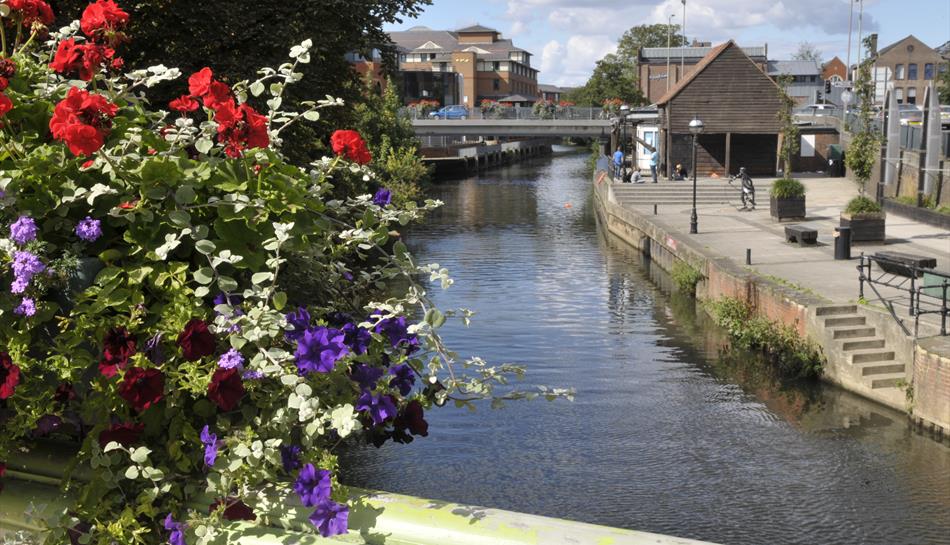
Guildford is an amazing place for travelers. On the southwestern outskirts of Greater London, Guildford is a prosperous town that has clutched its noteworthy character. This radiates through on the High Street, laid with cobblestones and fronted by seventeenth and eighteenth-century veneers that cover far more established structures. The Guildhall for example dates from the 1300s notwithstanding its Baroque seventeenth-century lines. Guildford has uneven geology on the North Downs, and Newlands Corner and Pewley Hill have fantastic perspectives on Surrey’s moving scenes. There are National Trust properties and respectable domains all around Guildford, similar to the Elizabethan Loseley Park and the Georgian Hatchlands Park. For a delicate walk can follow the towpath of the seventeenth century Wey and Godalming Navigations, or bounce on a boat for a visit in summer. With american airlines reservations, you can always do amazing things in Guildford.
Clandon Park
Four miles east of the focal point of Guildford, this refined Palladian ranch style home from the eighteenth century was gutted by a fire in 2015. Clandon Park was planned by Italian Giacomo Leoni, who was incompletely attributed with carrying the Palladian style to England. The grounds, with two exquisite parterres on either side of the house, were spread out by Capability Brown, the main nursery fashioner of the day. The National Trust expects to reestablish Clandon Park’s ground floor to its eighteenth-century magnificence, adding 21st-century presentation space to the upper levels, with work starting in 2019. At the point when this article was written in 2018, the house was welcoming guests to come, put on a hardhat, and check out the harmed insides to see the pieces of the house that got away from the most exceedingly awful of the fire harm.
Pewley Hill
This slope moves over the River Wey toward the southeast of Guildford and can be reached by walking in almost no time from the focal point of the town. As the primary conspicuousness in the zone, Pewley Hill was the area of a semaphore station in the nineteenth century, shaping a line that ran from Portsmouth to London. The Admiralty semaphore station from 1822 is still here and has since been transformed into a pined for a private home, with a dome that replaces the semaphore.
Stir up Park
This liberal park a little route from London Road station wins the Green Flag grant each year.
Stir up Park had been essential for an estate until it was given to Guildford by Lord Onslow in 1925, and has held quite a bit of its eighteenth-century format. In case you’re on the chase for a reasonable summer’s day with kids, Stoke Park ticks a lot of boxes. There’s a rowing pool, 18-opening scaled-down green, and skate park. You can likewise locate a tangible nursery and rose nursery, while the eighteenth-century walled garden contains formal flowerbeds and the recreation center’s tennis courts. A lot of Stoke Park is moving field, filling in as the site for the Surrey County Show on the bank occasion toward the finish of May when you can look at expressions and artworks, examine grant-winning animals, test food and watch equestrian shows.
Guildford Museum
On Quarry Street, bordering the manor grounds, the Guildford Museum is in a bunch of memorable structures joining Castle Arch, a Gothic passage to the stronghold. The exhibition hall moved here in 1898 and its birthplaces lie in the Surrey Archeological Society, which was established in 1845. In the archeological office are Neolithic pottery, Roman coins, and Medieval games counters, seals, pointed stones, floor tiles, and wall decorations. There are additionally fascinating bits of Guildford’s social history, similar to proportion books and a Home Guard protective cap from WWII, a nineteenth-century snuffbox, and Victorian and mid-twentieth century buyer items. In the workmanship and material assortment is the Braganza weaved box, dating to the 1600s and covered with the book of scriptures symbolism.
Shalford Mill
On the River Tillingbourne under two miles from the focal point of Guildford, there’s a mid-eighteenth century watermill in a preeminent condition of protection. The Shalford Mill worked just about 24 hours per day from its establishment until 1917 and has been defended as a National Trust property since 1932. Its astounding condition is somewhat down to crafted by the Ferguson Gang, an unpredictable gathering of well-off ladies who perceived the estimation of the plant, fund-raised for its maintenance, and afterward gave it to the National Trust. Head in to take a gander at the factory’s hardware, similar to the drive shafts, pit wheel, oat smasher and to respect the jewel design-led windows and get familiar with the Ferguson Gang.
Hatchlands Park
He authorized the renowned engineer Robert Adam, at that point toward the beginning of his vocation, to plan the insides. This was Adam’s first ranch style home commission, and from April to October, you’re ready to visit six reestablished rooms to appreciate his work, just as assortments of artworks and instruments. There are 40 console instruments, including perhaps the biggest assortment of its sort on the planet, alongside a representation of Shakespeare from 1610 and Venus and Adonis by Titian. Outside is a refined parterre and 422 sections of land of parkland, where you can locate a Georgian icehouse, a couple of inhabitant jackasses, rambling forest, and fields munched by cows.


